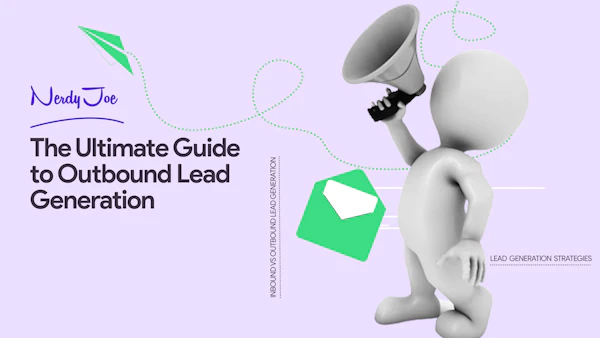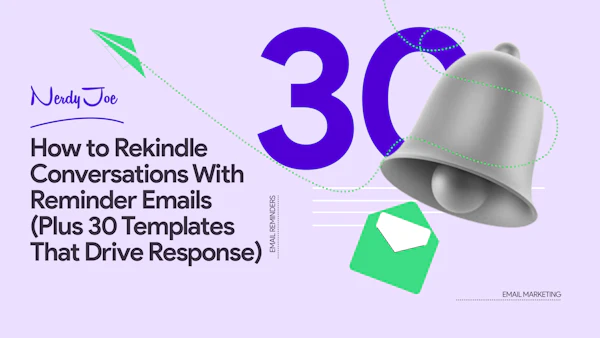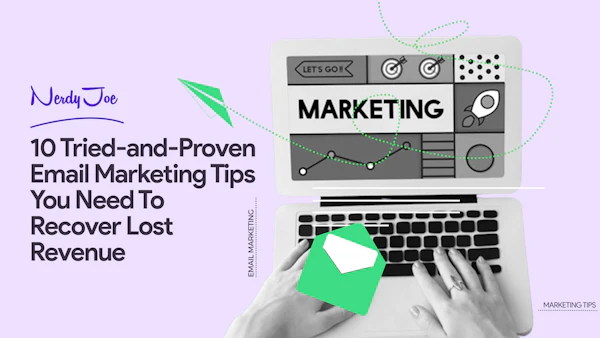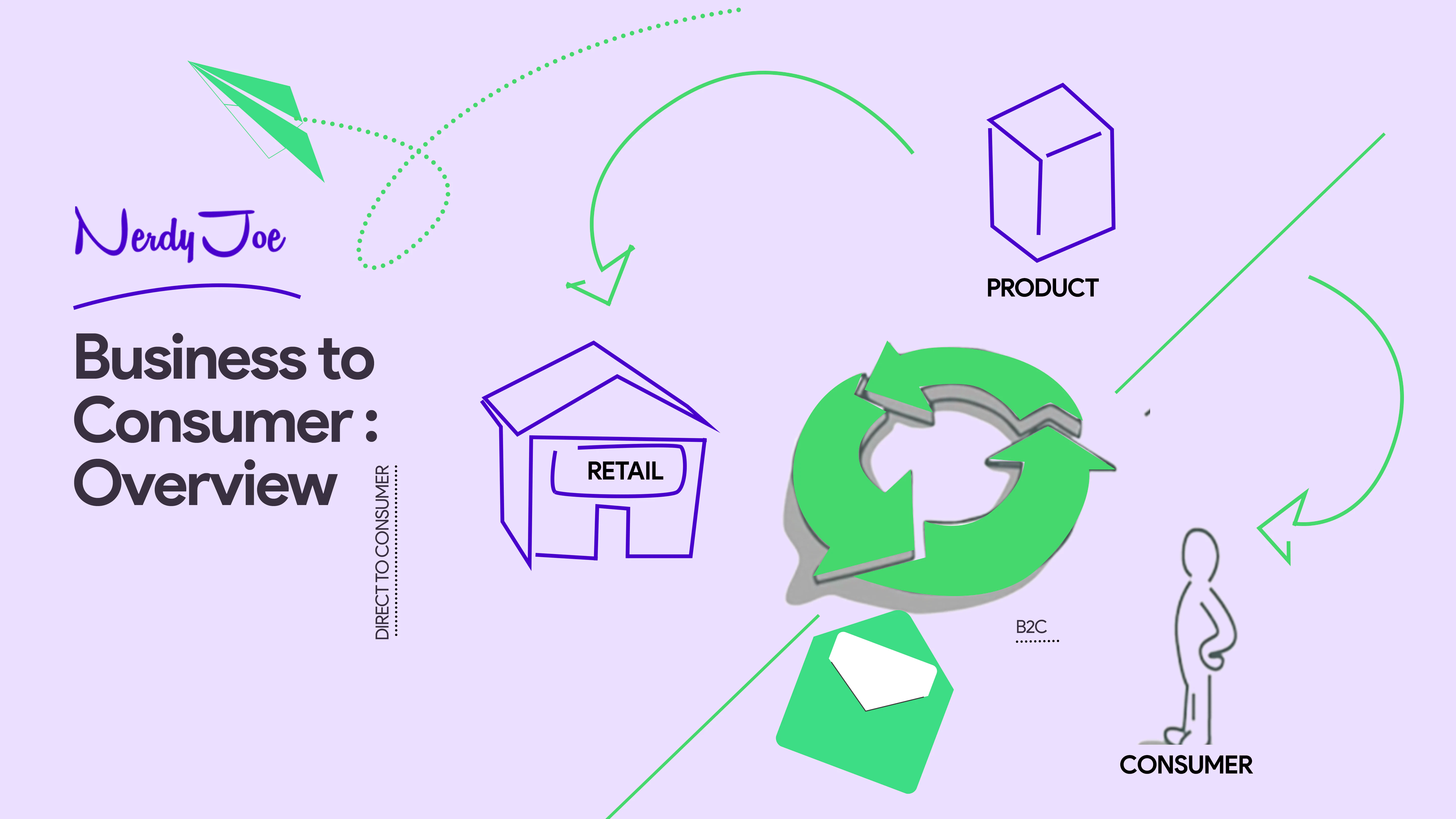
Crafting effective marketing strategies that trigger emotional reactions from your audience and pivot growth is essential for many B2C businesses.
But how do you know how to talk to your B2C audience and use the right messaging to trigger their emotions?
In this post, you will learn about B2C marketing, how it's different from business to business, and how it relates to email marketing.
What is B2C marketing?
B2C stands for business to consumer, and it refers to a business model where commercial activities take place between an online business and the consumers.
Think of it like businesses advertising their products or services to individual people or direct customers versus to other businesses.
So, B2C is different from mainstream B2B (business to business) marketing that pushes its products or services to other businesses.
When you think of B2C marketing, you can think of scenarios such as a visit to a doctor, grabbing tasty meals from a food truck or restaurant, shopping in a grocery or online store, and more.
You can also think of e-commerce stores that enable businesses to sell various goods and services directly to consumers.
B2C vs B2B
The differences between B2C and B2B are clear.
Here are some other things that make the two business models distinct.
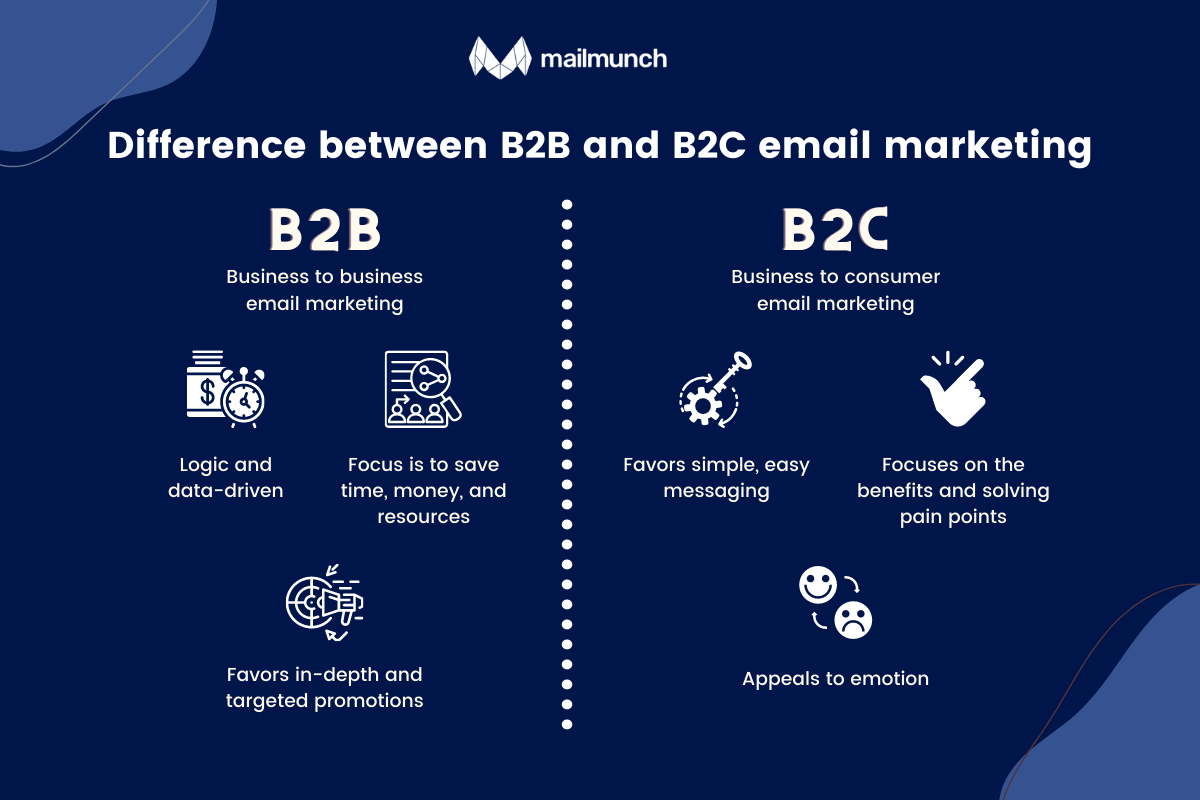
Target audience
The business model becomes more distinct when it comes to target customers.
While business to consumer marketing focuses on individual customers who purchase a product or service for their personal use and on a self-serve basis.
Business to business marketers, on the other hand, go after the key stakeholders of other businesses, who form what's called a buying committee. This committee is a group of decision makers who decide what happens in the business.
For instance, an online restaurant can send an email offering discounts on some meals to encourage a hungry person to buy from them.
Meanwhile, an accounting software company tries to convince the CFO and CEO at their target company to purchase their tool.
Logic vs. Emotion
In B2B marketing, the buying decisions are often based on logic.
A typical B2B transaction involves more people, usually the key stakeholders, and requires more consideration before a purchase is made.
However, that isn’t the case for business to consumer marketing. B2C deals with individual buyers.
You don’t have to go through various processes before you sell your products. You don’t have to craft a long or corporate story before you sell to your audience.
A simple message that elicits emotional responses can prompt your audience to buy your products or services.
Evaluation
B2B clients evaluate their purchases based on the return on investment (ROI). They evaluate their buying decisions based on what the new purchase will bring to the table.
How will the investment help them accomplish its business goals? Why is it better than any other alternatives?
Most B2C consumers don’t have to do this thinking. Many do not make purchases based on the number of dollars they stand to gain.
Their primary concern is how the products or service benefits them personally — it's all about their personal use.
Sales cycle
It takes longer for B2B executives to purchase than it takes B2C buyers. The former buy based on what the buying committee decides, whereas the latter buys based on impulse.
Understanding B2C email marketing
B2C or business to consumer email marketing refers to the process where businesses promote their products and services through email to individual buyers.
Businesses catch their audience’s attention through emails by using visuals, psychological triggers, and power words to cause an emotional response and encourage them to buy.
A major factor that makes this possible is lifecycle emails — understanding the buyer’s journey and sending personalized emails that meet their needs.
In other words, you have an in-depth understanding of your buyer’s behavior, take account of their interactions with your website or emails, and send an email that resonates with their needs to catch their attention.
For example, if one of your subscribers checked out the home appliance section of your online store, added some products to the cart but failed to checkout.
You can use this data to send abandoned cart emails to your customer, reminding them of what they had forgotten.
In short, B2C email marketing enables you to send emails to potential customers that have an interest in your products or services.
With the right data, you can send relevant emails that meet their needs while achieving your business goals.
Five B2C email marketing best practices
It is not right that you send anyhow emails to your customers. With the best practices, you can send relevant emails that meet your expectations.
Some of these practices include:
Write a compelling subject line
When you send an email campaign, it doesn’t open by itself. You need your subscribers to do that for you.
But they won’t open your email if the subject line is too dull, especially when they have tons of emails to open in their inbox.
Hence, you need to craft a subject line that is not only appealing but also stirs your audience's curiosity.
Also, ensure your subject line is accurate. Be on point, and do not mislead your audience.
For example, if your email focuses on offering incentives, ensure that the content revolves around the offer, as seen in the image below.

Read more: How to craft subject lines that get opened
Personalize your emails
Personalizing your emails enables you to send relevant emails to your subscribers and keep them engaged.
To do this effectively, you need to obtain the right data, segment your audience, and send emails that suit their needs.
As long as you have the right customer data, you can personalize the subject lines, content, images, and even the CTA.
For instance, if one of your subscribers is celebrating their birthday, you can send them a personalized email that cheers them on for that occasion.
You can also include exclusive deals and offers to make them feel special. That enables you to connect more with them.
Add an eye-catching design
You should consider using designs when crafting your emails. Whether it’s pictures, graphics, or videos, utilize these elements to appeal to your audience.
Organize your content effectively and make it easy to navigate for your users. Incorporating designs in your emails enables your subscribers to see what you have for them.
Include a clear call-to-action
When you craft your emails, you should inform your audience on what to do.
Irrespective of how structured or organized your message is, it should be centered around a specific call to action.
Just like the landing pages on your website, inform them about the next step to take. Crafting your emails without a clear call-to-action leaves your audience confused about what to do.
Optimize for mobile
Your email list consists of various subscribers who gain access and read emails on different devices.
If your email isn’t responsive on mobile devices, you're missing out on a lot of opportunities. After all, emails on mobile receive 68% more open than any other device.
Hence, ensure you optimize your emails for various devices to enhance engagement and make your customers happy.
Five categories of business-to-consumer models
B2C marketers utilize different models to reach their customers and grow their businesses.
These models include:
Direct sellers
As its name implies, direct sellers sell their products or services to their consumers without involving any intermediary or third party.
These sellers can be manufacturers, online retailers, or other small businesses, and they operate in different ways.
For instance, direct sellers like manufacturers can use a website or online communities or online ads, or other marketing channels to prevent other businesses from interfering in their activities.
Meanwhile, an online retailer can ship products from their warehouse to deliver to consumers.
Online intermediaries
Online intermediaries act as brokers. They don’t produce anything but help to redirect traffic to some sites, thereby connecting the buyers to retail stores.
Etsy and eBay are great examples of online intermediaries between buyers and retailers.
Community-based models
Social networks now allow users to create online communities based on their demographics or interests.
This enables small businesses to reach their audience without spending a lot. Popular platforms that allow such communities include Facebook, Twitter, Discord, Slack, and LinkedIn.
Advertising-based models
Popular websites often proceed to selling advertising space to other businesses to drive revenue.
So, if you're selling products to an online audience, you might want to work with one of these websites that sell advertising to promote your product to the end consumer.
Fee-based model
The fee-based model is when a platform decides to charge an amount of money to its customers per month for using its products.
Once the subscription expires, consumers won’t have access to the platform anymore until they renew their subscription fee.
A popular example includes Netflix, which charges its consumers to watch movies.
Key Takeaways
B2C marketing refers to a business model where businesses advertise their products or services to consumers rather than businesses.
B2C marketing is different from B2B marketing in terms of the audience, the process, and the method of evaluation.
Writing a compelling subject line, incorporating an appealing design, and including a specific call to action are some of the ways of crafting an effective email.
